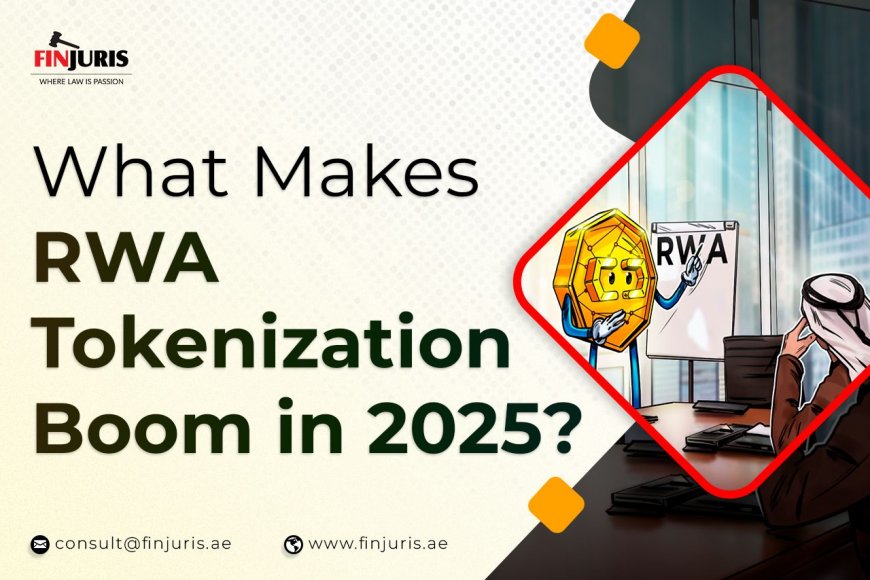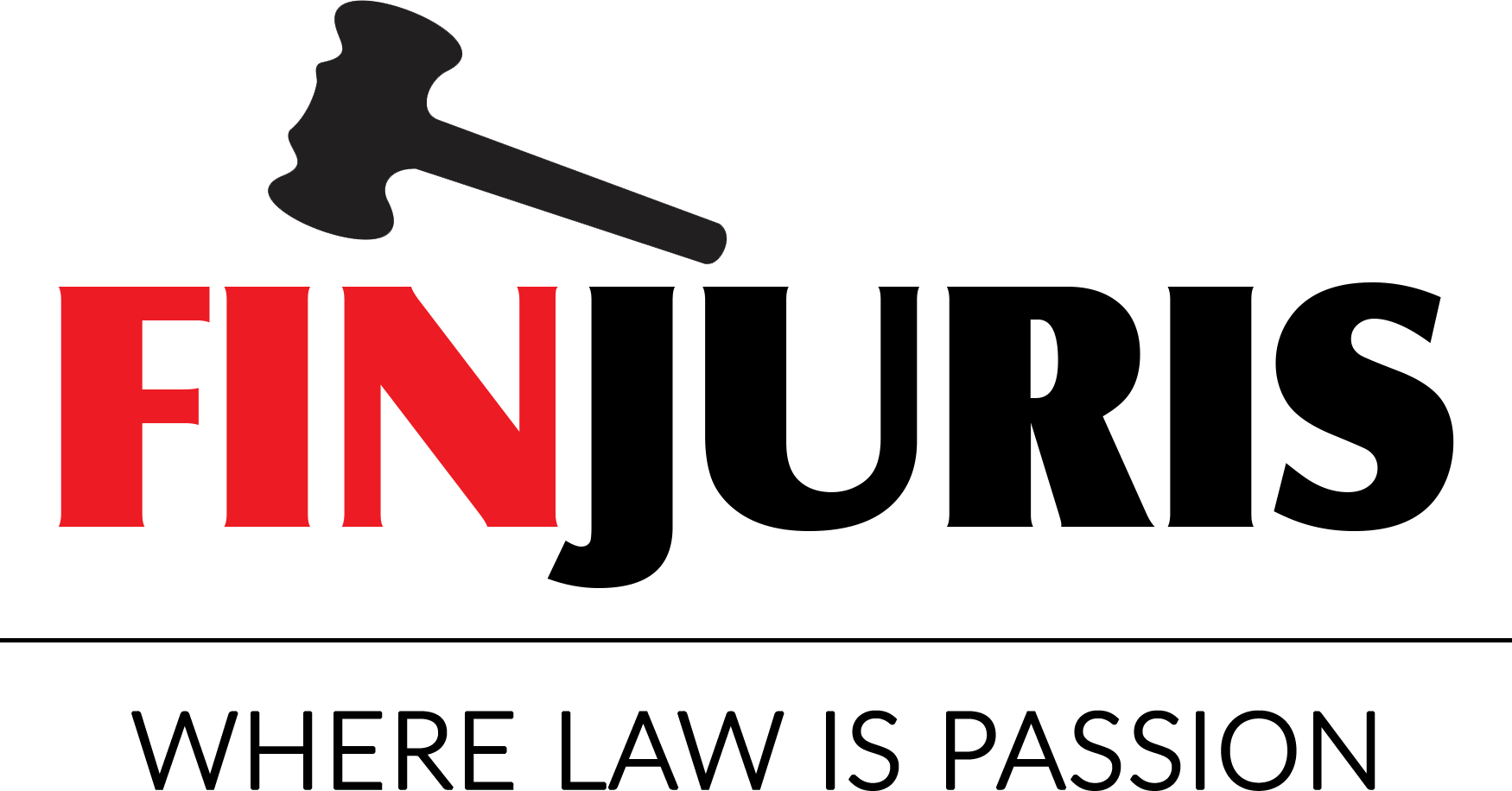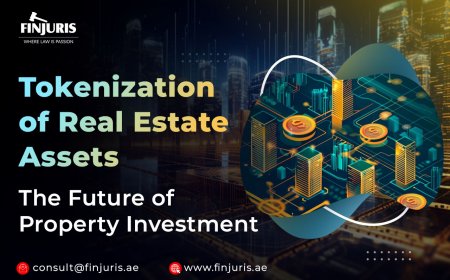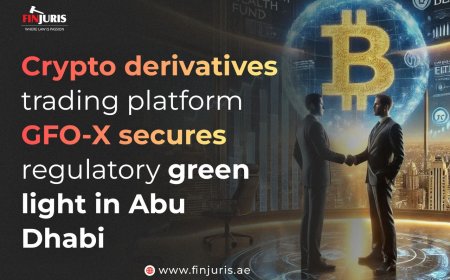What Makes RWA Tokenization Boom in 2025?
RWA tokenization booms in 2025 with clear regulations, institutional adoption, and new investment opportunities worldwide.

Real-World Asset (RWA) tokenization is surging in 2025 and has rapidly become one of the most exciting developments in digital finance. Once the realm of unknown thinkers and theorists, RWA tokenization is now poised to impact capital markets, asset management and investment strategies.
To explain what we mean by tokenization, we simply mean the conversion of real-world physical or financial assets into tokens on a blockchain. To get to this stage, we have lived many years of technological development, regulatory assurance, and institutional belief. These elements are coming together in 2025 to create the perfect storm.
In this article, we'll explain the reasons for the spike in tokenization of RWAs now, the sectors leading the charge, the remaining obstacles, and how this could evolve within the financial system over the next 10 years.
Grasping RWA Tokenization
RWA tokenization involves the digital representation of ownership rights of real-world assets on top of a blockchain. The assets can take the following forms:
- Financial instruments: Government bonds, private credit, and REITs (real estate investment trusts).
- Physical goods: Commodities, gold, art, and luxury items.
- Future cash flows: Invoices, royalties, and carbon credits.
When ownership rights are placed on top of a blockchain, they become tradable, divisible, and programmable, so that investors can buy tokens that provide instant ownership to a piece of an apartment building, ownership of a portion of a U.S. Treasury bond, or even buy rights to future music royalty anticipation.
The appeal of RWA tokenization is clear: liquidity, transparency, and access.
Why 2025 Is the Year for Breakthrough
Many factors can explain the tokenization explosion of 2025.
Regulatory Momentum
In earlier years, tokenization was challenged with uncertainty. Was a tokenized bond a security? Was fractionalized real estate legally enforceable?
By 2025, several governing bodies provided the legitimacy needed to clarify many of these questions: the EU’s MiCA framework, the Singapore Payment Services Act, and Dubai VARA are at the forefront of providing legal clarity. More significantly, the U.S. SEC has made tentative strides to approve pilot programs.
The clearer rules have reduced uncertainty for issuers and investors by making tokenization a relatively safer venture.
Read more: Charting the C ourse for a Cryptocurrency License – Global Trends and Legal Fundamentals
Institutional Adoption
Global banks, asset managers, and sovereign wealth funds are now actively engaging in the experimentation of tokenization. BlackRock, JPMorgan, Franklin Templeton, and Standard Chartered have launched some form of tokenized products.
When this sect embraces tokenization, capital will follow. The participation of established institutions lends credibility to tokenized markets and attracts the institutional capital that has previously been sidelined.
Read More: Crypto Consulting Services: Empowering Businesses in the Digital Asset World
Demand from DeFi
Decentralized Finance (DeFi) protocols desire stable, yield-bearing assets in the form of RWA tokens.
Today, platforms accept tokenized treasuries or credit pool assets as collateral for loans, staking, or structured products. DeFi has catalysed and developed demand for RWA tokens. This relationship helps solidify the pipeline from blockchain innovation to traditional capital markets.
Technology and Standards in Implementation
The technical infrastructure for tokenization has matured. Tokenization platforms now have: APIs for compliance with KYC, AML, and reporting; smart contracts for programmable payouts; increased cross-chain interoperability for token transfer; and proof-of-reserve mechanisms to verify asset backing.
These advances in technology have standardized the storage, issuance, management, and trading of RWA tokens.
Desire for Investment Diversification
Traditional capital markets have become increasingly volatile, leading many investors to seek alternatives with a predictable yield, such as tokenized government bonds and private credit alternatives. Tokenization, especially for government bonds, provides an opportunity to seek alternatives in a compliant, accessible method, even on a global basis and 24/7.
Use Cases
Tokenized Government Bonds
The leading category of RWA in 2025 is tokenized government's treasury bills. Investors can purchase tokens representing ownership backed by short-term U.S. Treasury-bills. Tokenized treasuries trade on the blockchain and provide yield while also delivering safety and accessibility.
In January 2025, tokenized government treasuries surpassed $1.5 billion in circulation and became one of the fastest-growing collaterals offered in DeFi.
Real Estate Tokenization
Property markets have long suffered from illiquidity, and real estate tokenization has allowed a fractional purchase in numerous commercial buildings or residential apartment buildings by investors.
There are now compliant real estate tokenization schemes in the UAE, Singapore, and across Europe, giving small investors access to a market that was once reserved for high-net-worth individuals or institutions.
Read More: Tokenized Property in Dubai Explained: Benefits, Laws & Investment Tips
Private Credit and Loans
Private credit has advanced into a $1 trillion asset class worldwide. Tokenization allows for loans and receivables to be fractioned into digital tokens, providing liquidity for assets that have historically been illiquid.
Decentralized lending protocols have begun integrating these credit pools, allowing investors to deposit and receive yield while providing borrowers with a more flexible access to capital.
Commodities and Precious Metals
Gold-backed tokens are not a new trend, however, by 2025, they are enjoying a resurgence. Tokenized commodities allow investors to gain exposure to physical goods, with instant settlement and global liquidity.
Art, Music, and Intellectual Property
Tokenization is not limited to finance. We are also seeing platforms that tokenize art collections, music royalties, and patents, providing investors exposure to creative and intellectual assets. This market is still small but is growing quickly.
Advantages of RWA Tokenization
- Liquidity: Assets that would typically take months to liquidate can now be traded instantaneously.
- Fractional Ownership: Investors are able to maintain ownership of small portions in large assets, increasing accessibility.
- Transparency: Transactions can be recorded in blockchain without being altered, reducing fraud.
- Efficiency: Smart contracts automate the payment processes, redemptions processes, along with compliance.
- Global Access: Investors from all over the world can include, giving a wider investor base.
Challenges
Legal Enforcement
A token is a claim to ownership, but it is up to the courts to enforce that claim. In some locations, property databases or incorporated company laws do not recognize blockchain tokens as evidentiary documents even when the token meets all necessary conditions. If the legal connections from the token to the asset do not exist, disputes may arise.
Read More: Commercial Gaming Licenses Across the World
Custody and Trust
For tokenized assets to be trustworthy, the asset must be real. Though proof-of-reserve systems and audits are essential, they are not definitive. Custodial risks still exist to some degree.
Lack of Liquidity
Not all traded tokens are traded actively. If a token can be traded actively, there are at least options available. Many actively traded tokens experience thin liquidity, which limits an investor's exit options.
Regulatory Fragmentation
Countries are establishing their own rules as they enter the realm of tokenization; sometimes creating contradictory guidelines. During a cross-border transfer of a token, the receiving entity may not meet the same standards.
Oracle Risk
Tokenization depends on permissionless, external data sources to verify whether a payment should be made or not. Without the proper oracles, it may be impossible to deliver the payment if the oracle is compromised.
Worldwide Hubs for Tokenization of RWAs
United Arab Emirates: Following the launch of VARA and the ADGM in the UAE, the country serves as a leader on tokenization platform projects in various sectors, often for real estate and commodities.
- European Union: MiCA and the pilot regimes for digital securities in the EU have led to strong growth in adoption across Europe.
- United States: Although the US has been slow to develop regulations in digital assets, asset managers like BlackRock are engaging with tokenized funds.
- Singapore and Hong Kong: Both Singapore and Hong Kong are competing to become Asia's leader in digital securities and tokenization.
Case Studies
Franklin Templeton Tokenized Fund
Franklin Templeton launched one of the world's first tokenized money market funds and has grown the fund to billions in AUM. The tokens are tradeable on several public blockchains, proving scalability is possible.
Read More: Dubai Moves Toward Smart Real Estate Investment with Crypto.com Blockchain Deal
JPMorgan's Onyx Platform
JPMorgan's Onyx digital assets division was the first to tokenize collateral settlement for institutional investors, and their digital asset infrastructure has proven that scalable tokenization will work for banking institutions.
Real Estate in Dubai
Developers have issued tokenized shares of luxury property projects in Dubai and attracted significant investment from Asia and Europe, proving appetite for cross-border investment.
The Outlook of Tokenization of RWAs
Moving forward, it is possible that tokenization defaults to becoming the norm instead of the exception, within the financial markets. Potential developments include:
- Integration with central bank digital currencies (CBDCs) for ease of settlement.
- Tokenization of whole stock exchanges where equities trade as programmable tokens,
- Moving into new asset classes including infrastructure, carbon credits, and renewable energy projects.
- Possible emergence of secondary market with regulated exchanges for tokenized RWAs.
- Better alignment of law and code by ensuring legal enforceability is embedded into token standards.
RWA tokenization is on the fast track in 2025 because the conditions are finally right. The regulatory landscape is clearer, institutions are engaged, the technology has matured, and investors are thirsting for new opportunities.
That said, challenges remain - legal recognition, custody, and liquidity, among others. Still, the momentum is undeniable.
A few years ago, we were experimenting; now, we are creating a foundation for modern finance. As RWAs move on-chain, the structure of capital markets is shifting. By 2030, tokenization may not be a "thing" but simply the way in which assets are owned, traded, and valued.
What's Your Reaction?




















